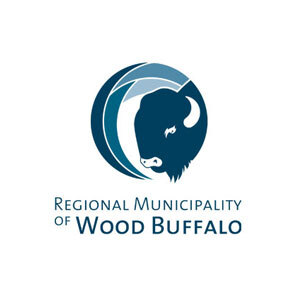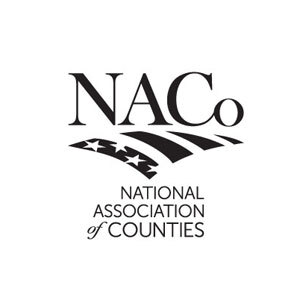Collaboration—the collective work of two or more people with a shared goal—is essential in an organization. Collaborative organizations are more likely to reach shared goals and outperform others.
If collaboration is so beneficial, why is it so rare? Why is it difficult to collaborate?
Ask this question and you’ll hear many explanations.
Some say it’s the silos we work in—breaking down concrete walls can be tough.
Others say it’s our culture, which gears us towards competition—even within the same organization.
Collaboration is about establishing trust in relationships. Competitiveness is about the opposite: getting the most or giving the least.
Still others say working through different perspectives takes too much time.
Defensiveness: A Roadblock to Collaboration
But there’s another very personal factor you may not have considered: defensiveness.
According to mediator, former law professor, and senior administrative law judge Jim Tamm, it is the single greatest inhibitor to true collaboration.
In a TEDx talk called Cultivating Collaboration: Don’t Be So Defensive!, Tamm explores the emotional side of collaboration, where we’re driven by our vulnerabilities.
Using research on chickens, Tamm contrasts the competitive and mutually destructive “red zone” and a collaborative, mutually beneficial “green zone.”
Individual “star” performers among hens—those laying the most eggs—are more aggressive with other hens, creating underperforming red zones. In red zones hens get pecked regularly, sometimes to death.
Green zone environments on the other hand have fewer star performers, yet over time produce more eggs. For Tamm, these chicken behaviors provide a great metaphor for human behavior.
He shares his experience as a judge:
“In over 25 years of working with other people’s conflict, I almost never had to deal with pure legal issues. People were almost always before me because somebody would start feeling vulnerable and then they would get defensive. And when we get defensive our thinking becomes rigid, our IQs drop about 20 points and simply become stupid. And not only are we terrible problem-solvers ourselves but we then invite everybody else in the room to get defensive and then what you end up with is a whole room filled with red zone people who cannot solve a problem.”
You can move from green zone to red zone very quickly. Defensiveness then “owns” us, unconsciously. Our defensive and often angry mind starts opposing whatever the other party says or does.
When we are defensive, we are protecting ourselves from fears—maybe that we are insignificant, incompetent, or unlikeable, or that we will lose power, status, security, or resources. It defends us from unconscious fears we don’t want to feel.
When fears make us feel vulnerable, we feel threatened, and we defend ourselves. Our primal instincts come into play. We cannot see others as our equals. Instead we quickly separate the people of our world quickly into buckets of those we like, those we dislike, and those for whom we feel indifferent.
And what else happens when we become defensive? We become terrible problem solvers, and our defensiveness invites everyone else to be defensive.
So, what can we do about it?
Tamm says, “If you reduce your defensiveness you increase your ability to solve problems.”
In other words, you can increase your ability to collaborate.
Signs of Defensiveness
Tamm suggests we need to learn to recognize our outward signs of defensiveness, and then establish an early warning system. Mindful attention to your own thoughts, words and actions—i.e., self awareness—is key.
Here are some common outward signs:
- Withdrawing into silence
- Playing “poor me”
- All-or-nothing thinking
- Wanting to be right
- Blaming or shaming others
- Feeling confused
- High charge of energy
- Catastrophizing everything
- Wanting the last word
- Obsessive thinking
- Flooding with information to prove a point
When Your Early Warning System Tips You Off
Here’s what to do when you detect an early warning sign:
- Acknowledge you’re being defensive – You first need to notice the warning sign.
- Slow down (your physiology) – For example, take a walk around the building and get some fresh air, or if you’re trapped in a meeting, take a few deep breaths.
- Check negative self-talk – If you’re engaging in negative thoughts try to turn them into something more accepting, more creative, and less toxic.
- Create an action step and practice it so it becomes automatic – This should be directly related to your warning sign. For example, if your warning sign is flooding with information to prove a point, your action step is to be quiet for a minute or two. If your warning sign is a high charge of energy, your action step is to take deep breaths or visualize a relaxing scene. If your warning sign is confusion, buy yourself some time by asking for a break
- Start over – Return to the issue at hand with an inquiring mind, and defenses lowered.
Reducing your defensiveness will increase your ability to solve problems and work collaboratively. Reducing defensiveness will also help you get the best performance out of your team, and from your organization.
Case Studies
So, how can you help your employees become less defensive, and more collaborative? Here’s what some of our clients have done…
State of Vermont
At the State of Vermont we created a one-day seminar on Collaborative Leadership for leaders at all levels, creating an opportunity for more frequent and effective cross-functional teams. Topics included—
- The importance of clearly defined shared goals
- Collaboration as a conflict resolution strategy
- How different people gain different things from collaboration
- Potential upsides and potential downsides to collaboration
- Key ingredients to effective collaboration
- Barriers to effective collaboration
- How to promote collaboration
Regional Municipality of Wood Buffalo (RMWB)
The Regional Municipality of Wood Buffalo (RMWB) in Alberta, Canada, was going through a period of unprecedented change. They needed their leaders to be agile, resilient and collaborative so they could take on new challenges. 4Forward helped RMWB distill key collaboration concepts into a half-day workshop for all team members. The workshop covered—
- Meaning of collaboration
- Benefits of collaboration
- Barriers to collaboration
- Improving your collaboration mindset
- Creating more collaborative work systems
- Learning collaborative skills and behaviors
The National Association of Counties (NACo)
The National Association of Counties (NACo) wanted to help its member organizations deal with the trickiest, most “wicked” problems, using an unconventional model for collaboration. NACo sponsored a half day seminar, designed and delivered by 4Forward, on Creating Consensus out of Chaos, featuring an 8-step process to bring together normally adversarial groups into productive collaboration. The seminar introduced key and proven principles, processes and tools to foster understanding, reduce polarization, boost engagement and solve problems collectively.
Do you want to encourage your organization to be less defensive, and more collaborative? Talk to us about a tailored solution for your organization.





